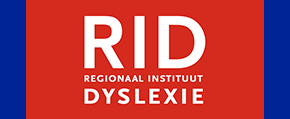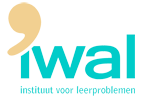Procter and Gamble GmbH

Procter & Gamble (P&G) is a manufacturer of fast moving consumer goods, including nappies and baby wipes. At P&G’s German Innovation Centre (GIC), a large R&D group researches baby development in the first 3 years of life, baby care habits and practices, baby sleep development and social interactions of babies with their caregiver. GIC has campuses located in Schwalbach am Taunus and Kronberg (both located near Frankfurt, Germany). The close proximity allows for effective cooperation and knowledge transfer across disciplines.
GIC is the largest R&D center and innovation hub for P&G in Europe with more than 1000 people in R&D of which the majority hold postgraduate scientist and engineer degrees. Within P&G, the German Innovation Center (GIC) is a key training centre worldwide for P&G technical staff. GIC is a large innovation centre with responsibility for global development of baby care products, as well as feminine hygiene, hair care, oral care, and shaving products. It contains a clinical skin lab including actigraphy equipment to facilitate sleep research in a laboratory environment and in infants’ homes, an infant research centre with regular testing of up to 1000 infants, prototyping facilities, an analytical center capable of using a wide range of analytical methods, physical and chemical laboratories, and a centre for modelling and simulation. Close connections to other P&G innovation centres, in Europe and other regions, allows access to further research such as skin science.
GIC scientists have prior experience in infant development research and can make use of an existing network of academic advisors, industry associations, and professional and consumer organisations. This includes close collaborations with some of the leading universities in Europe. Connections between P&G and Birkbeck, University of London, exist for over 20 years.
Dr. Frank Wiesemann is a Principal Scientist at P&G with 23 years’ experience in infant related research. His research focuses on understanding the impact of factors such as sleep, touch and different products (e.g. nappies) on an infant’s development. His research focuses on understanding the impact of factors such as sleep, touch and products (e. g. nappies) on infant's development. Example product: Pampers Baby Dry with Extra Sleep Layer, shown to protect infants sleep for up to 12 hours.
Relevant publications
Wiesemann, F., Adam, R. Absorbent products for personal health care and hygiene in V. T. Bartels (Ed.), Handbook of Medical Textiles, Woodhead Publishing Ltd. 2011.
Pisch, M., Wiesemann, F., Karmiloff-Smith, A., J. Child Pschology and Psychatry 2018, Infant wake after sleep onset serves as a marker for different trajectories in cognitive development, doi:10.1111/jcpp.12948
INTERLEARN individual project involvement:
Oefenweb.nl b.v.,Netherlands
![]()
Educational software. Oefenweb.nl (Math Garden) is a Netherlands-based company, with its headquarters in Amsterdam, focused on progress-monitoring software for mathematical and executive function skills in school-aged children. This is accomplished in an online gaming environment, using an adaptive system, which provides virtual incentives, making users responsible for their own learning progress. Math Garden provides detailed information about the performance of its users, at both an individual and group level, allowing comparison with up-to-date reference groups, tracking of improvement in performance over time, insight into strengths, trouble spots and typical mistakes. Oefenweb currently has over 100,000 active participants, within and outside of schools, across the Netherlands.
Prof. dr. Han L.J. van der Maas, chief scientific officer. His research focuses on the formalisation and testing of psychological theories in areas such as cognition, expertise, development, attitudes and intelligence. van der Maas, H. L. J., Molenaar, D., Maris G., Kievit R. A. & Borsboom, D. (2011) Cognitive psychology meets psychometric theory: On the relation between process models for decision making and latent variable models for individual differences. Psychological Review, 118, 339-356.
Prof. dr. M.E. J. Raijmakers, co-supervisor research, university collaborator. Her work focuses on understanding the development of multiple systems of category learning in relation to executive functions, individual differences in feedback learning, and mathematical models of learning processes that account for categorical and individual differences. Raijmakers, M. E. J. , Schmittmann, & V. D., Visser, I. (2014) Costs and benefits of automatization in category learning of ill-defined rules. Cognitive Psychology, 69, 1-24.
Relevant publications
Van der Ven, S., van der Maas, H. L. J., Straatemeier, M., & Jansen, B. R. J. (2013). Visuospatial working memory and mathematical ability at different ages throughout primary school. Learning and Individual Differences. 27, 182–192. Jansen, B. R. J., Louwerse, J., Straatemeier, M., Van der Ven, S. H., Klinkenberg, S., & Van der Maas, H. L. (2013). The influence of experiencing success in math on math anxiety, perceived math competence, and math performance. Learning and Individual Differences, 24, 190-197.
Maris, G. & Van der Maas, H. L. J. (2012). Speed-accuracy response models: Scoring rules based on response time and accuracy. Psychometrika. 77(4), 615-633.
INTERLEARN individual project involvement:
Transylvanian Institute of Neuroscience (TINS), Romania
![]()
"TINS. Studying neural circuits.
The Transylvanian Institute of Neuroscience (TINS) is a private, non-profit research institute founded by neuroscientists. Its main mission is to further neuroscientific research by studying the dynamics of neural circuits in health and disease. TINS also focuses on research in cognitive sciences and brain-inspired artificial intelligence. TINS is located in Cluj-Napoca, a vibrant university city in the heart of Transylvania.
TINS was founded in October 2017 with the purpose of providing the institutional framework necessary for the advanced experimental research of the function of neural circuits. Presently, multiple research labs operate at TINS, benefiting from an exceptional experimental and computational infrastructure. TINS is the organizer of the Transylvanian Experimental Neuroscience Summer School (TENSS)"
Dr. Raul C. Mureșan is the president of TINS and leads the Experimental and Theoretical Neuroscience department (PhD, Technical University of Cluj-Napoca & Max Planck Institute for Brain Research in Frankfurt, Germany; 5 PhD students completed). His research focuses on the study of the visual system and on mechanisms and functional role of cortical oscillations. His lab explores these avenues by performing high-density EEG recordings in humans and electrophysiology, optogenetics and imaging in rodents.
Relevant Publications
Moca V.V. et al. (2014). Membrane resonance enables stable and robust gamma oscillations. Cerebral Cortex 24(1):119-142. Nikolić D. et al. (2012). Scaled correlation analysis: a better way to compute a cross-correlogram. Eur. J. Neurosci 35(5): 742- 762. Jurjuț O.F. et al. (2011). Timescales of Multineuronal Activity Patterns Reflect Temporal Structure of Visual Stimuli. PLoS One 6(2). e16758.
INTERLEARN individual project involvement:
Regionaal Instituut voor Dyslexie BV (RID), Netherlands

The RID is a Dutch-based company, with 13 main locations and 70 care-locations throughout the Netherlands and its headquarters in Arnhem. The RID was founded in 1989 and is one of the largest specialised institutes for dyslexia in the Netherlands, The RID provides research-based diagnostic assessment and treatment of developmental dyslexia, dyscalculia and related learning problems. Over 1700 children with severe reading and/or arithmetic problems are treated yearly. The RID puts a strong focus on research, innovation and development, and closely collaborates with Maastricht University on fundamental research on reading development and dyslexia. In addition there is close collaboration with RIOzorg, an institute with 20 locations where children and adolescents with signs of ADHD, behavioral problems, autism, anxiety, trauma, compulsions, tics are treated.
Dr Milene Bonte, RID (Research Advisor, RID; Professor, Maastricht University; Collaborator Rudolf Berlin Center Amsterdam). Her research focuses on the neural basis of speech perception, reading and language development in typical and dyslexic readers. Bonte, M., Frost, M., Rutten, S., Ley, A., Formisano, E., and Goebel, R. (2013). Development from childhood to adulthood increases morphological and functional inter-individual variability in the right superior temporal cortex, NeuroImage, 83, 739-750.
Dr Anniek Vaessen, (Research fellow RID & Maastricht University). Her research focuses on long-term cognitive dynamics of fluent reading, spelling development, developmental dyslexia, and underlying cognitive factors that cause developmental dyscalculia. As a member of the research and development team at the RID she is involved in investigating the short and long term effects of developmental dyslexia treatment and child/diagnostic characteristics that contribute to the effectiveness of treatment. Vaessen, A., & Blomert, L. (2013). The cognitive linkage and divergence of reading and spelling development. Scientific Studies of Reading, 17, 98-107. doi: 10.1080/10888438.2011.614665.
Relevant publications
Vaessen, A., & Blomert, L. (2010). Long term cognitive dynamics of fluent reading development. Journal of Experimental Child Psychology, 105, 213-231. doi: 10.1016/j.jecp.2009.11.005. Vaessen, A., & Blomert, L. (2013). The cognitive linkage and divergence of reading and spelling development. Scientific Studies of Reading, 17, 98-107. doi: 0.1080/10888438.2011.614665.
Vaessen, A., Gerretsen, P., & Blomert, L. (2009). Naming problems do not reflect a second, independent core deficit in dyslexia: ’Double deficits’ explored. Journal of Experimental Child Psychology, 103, 202-221. doi: 10.1016/j.jecp.2008.12.004.
INTERLEARN individual project involvement:
IWAL instituten voor dyslexie B.V., Netherlands

IWAL was incorporated in 1983 and is a major specialised institution in the Netherlands for clinical care to children with learning disabilities with a dedicated research and development department. IWAL has over 30 years of experience with scientifically-driven health care for people with learning disabilities, especially for children with reading or mathematics disabilities. Over 1000 children with learning disabilities are referred to IWAL for clinical care, i.e. extensive diagnostic assessment and specialised treatment, on a yearly basis. IWAL participates together with the Psychology Department of the University of Amsterdam in the Rudolf Berlin Center. This is a university center in which clinical care, (post)doctoral education, and neurocognitive and behavioural research in the area of learning disabilities are integrated.
Dr. Jurgen Tijms is Head of Research & Development IWAL, and co-director of the Rudolf Berlin Center, University of Amsterdam. He works closely with several research groups and has over 15 years’ experience integrating dyslexia research with clinical practice. He will devote 20% of his time to research, training and supervision of ESRs. His research interests centre on the neurocognitive mechanisms involved in learning disabilities and on interventions for children with reading or math disabilities. Bexkens, A., van den Wildenberg, W., & Tijms, J. (2015). Rapid automatized naming in dyslexia: Is inhibitory control involved? Dyslexia, 21, 212-234.
Relevant publications
Kosmos Klikker (2015) – a serious game (app) to train reading fluency in children with dyslexia. LEXY (1983; 2011) – intervention program for treatment of severe dyslexia. #BOOK (2015) – A training program for reading skills and soc-emo competences for adolescents from disadvantaged neighbourhoods
INTERLEARN individual project involvement:
